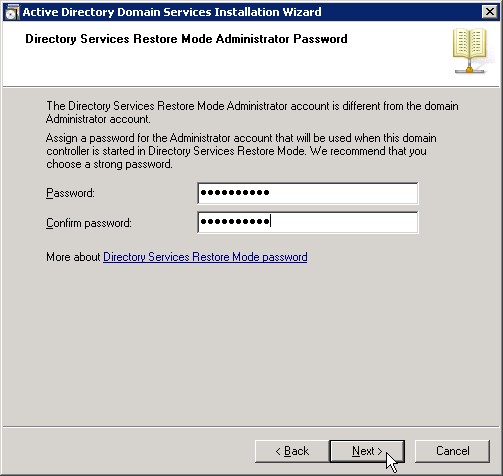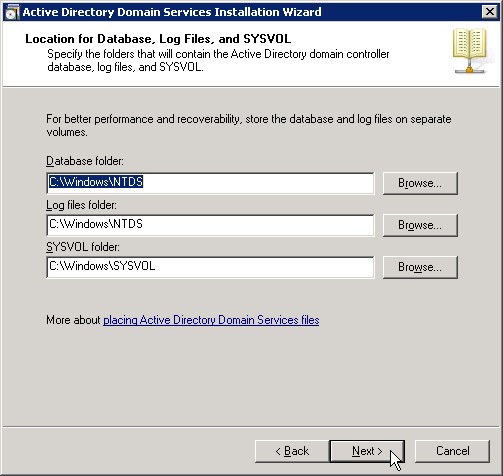
In my previous post, I explained about the ADDS Hardware and software requirement and how to install it.
in this blog I will explain couple of things about installation again so that we can understand why do we
use password during the ADDS installation and what is NTDS and SYSVOL folders , what do we have
in NTDS and in SYSVOL. so let's begin with the password we use during the ADDS installation , we
choose strong password for DSRM(Directory Service Restore Mode ) if in case Active Directory
fails and needs to be restored you will use this password to restore the active directory using this DSRM. It's special boot mode . As you might have seen in windows clients for example in windows XP , Windows vista
and in Windows 7 you restart the computer and keep taping F8 key unless you see a different black screen
with advance boot option . you do the same thing in server2008 you restart and keep taping F8 key on the keyboard then you will see different black screen there are many options available we will chose directory
service restore mode as you select that option it will ask you for a password now you will have to enter the
same password you have chosen when you install ADDS . I have updated the screen shot for DSRM how
it looks like. you need to follow the steps to complete this task. My Target was just to let you know what
is the reason of using a password. I will defiantly explained about DSRM in my other blogs.
Now we come to NTDS and SYSVOL folder so let's start with the NTDS folder what is it? what do we have in it.
Ntds.dit: (New Technology Directory System.Directory Information Tree)This is the main AD database. NTDS stands for NT Directory Services. The DIT stands for Directory Information Tree. The Ntds.dit file on a particular domain controller contains all naming contexts hosted by that domain controller, including the Configuration and Schema naming contexts. A Global Catalog server stores the partial naming context replicas in the Ntds.dit right along with the full Domain naming context for its domain.during the installation of
AD it creates two file res1.log and res2.log. The size of each file is 10 MB. These files ensure that changes
can be written on the disk. should the system run out of disk space. Apart from these we have edb.log when changes is made to AD database they are written on edb.log once written process is complete then they are
written to database.
SYSVOL Folder: SYSVOL folder is a shared folder in Active Directory that contains all the active directory security level data. such as group policy ,log on and log off script. Its stored on local hard disk. or you can say the term sysvol refers to set of file and folder resides on the local hard disk drive and replicated
to other domain controller through the FRS(file replication service) which is DRF (distributed file service)now

.jpg)












0 comments:
Post a Comment